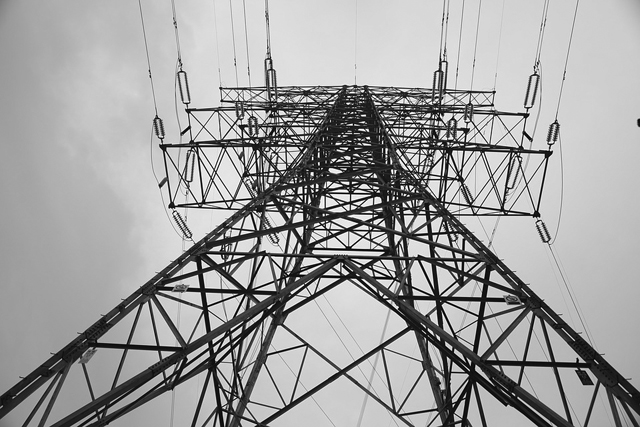The story of rising power prices is very different from what our political leaders tell us.

Gold-plating transmission networks seemed like a good idea when energy demand was high. PHOTO Pixabay
There’s an idea doing the rounds that rising power bills are a direct result of rich people putting solar panels on roofs. It’s vaguely plausible, often repeated – and wrong.
It’s true that Australian electricity, once comparatively cheap, is now among the most expensive in the world. But the causes have almost nothing to do with the cost of renewable energy.
Solar energy is no longer the preserve of the rich. In the 1970s the total retail cost of a home system in Australia was as high as $200 per watt of electricity produced; now it’s around $1.60 a watt. An average-sized system, fully installed, now costs between $4000 and $4500.
So it remains feasible to install rooftop solar systems in Tasmania even though the return on electricity is now less than a quarter what it was four years ago. Here and elsewhere, the low feed-in tariff is a net gain for retailers. So there’s no price pressure from that quarter.
After a state-wide blackout in South Australia last September, triggered when a windstorm flattened power pylons, senior politicians including Malcolm Turnbull have argued that accelerated rollout of intermittent solar and wind energy has disrupted the smooth functioning of the grid.
Over summer, other blackouts occurred elsewhere in the national electricity market (NEM), which covers all of eastern Australia, including Tasmania, and South Australia. But it was the latter state, with its high proportion of wind and solar power, that copped most of the flack.
Tasked with investigating the NEM, chief scientist Alan Finkel won’t finish his final report until mid-2017, but his preliminary report gave a strong hint that he would not be advocating any cutback in the rollout of renewable energy.
Parameters have changed in the 18 years since the NEM was established, said Finkel. He saw the rapid emergence of new power sources and technologies combined with declining demand for grid electricity as “a once-in-a-generation opportunity” for NEM reform.
Wind turbine controllers, batteries, synchronous condensers and other new technologies could improve system security, he said, but “the NEM does not currently encourage their adoption.”
More open-cycle gas generators would be a good complement for variable wind and solar, but export contracts had led to a tight domestic supply of gas, the report said. “The need for greater gas supplies for electricity generation is increasingly urgent.”
But there’s a much bigger factor. A decade ago, projections of rising electricity demand persuaded power utilities, notably state-owned ones in NSW and Queensland, to spend billions of dollars over multiple years to upgrade transmission towers, poles and cables.
Instead, demand went down, leaving a huge debt burden to pay off. Householders wanting to understand why power bills keep rising need look no further than that.
Tasmania was more prudent in managing its transmission infrastructure, as TasNetworks CEO Lance Balcombe pointed out at last week’s excellent Social Change Institute (UTAS) future energy panel discussion. But like all participants in NEM it has to wear some of the consequences.
We can expect all this to be thoroughly explored in an investigation of retail electricity prices by the Australian Competition and Consumer Commission, ordered a fortnight ago by treasurer Scott Morrison and due to report back in late September.
Hopefully this and the Finkel inquiry will provide ideas for fixing our failing electricity market. One certainty is that neither investigation will be putting any blame for those rising retail prices on the much-maligned carbon tax, killed off in 2014.
In fact, an ultimate solution has to include some sort of price on carbon, the Grattan Institute’s energy specialist Tony Wood told the UTAS event last week. His view is that it’s a key element in bringing stability to energy markets.
A growing chorus of economists and business interests – including some coal-power generators – supports that view, but it’s going nowhere for now. The Turnbull government faces a roadblock of anti-carbon price diehards in its own ranks.
So national energy policy has come down to partisan pride. The result is a big, ugly mess.
